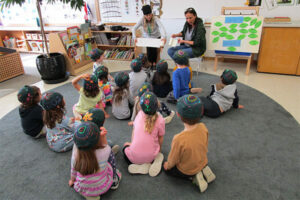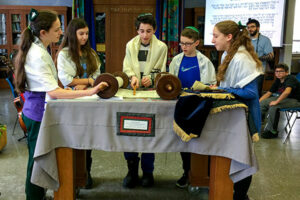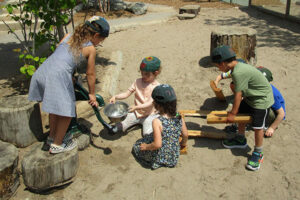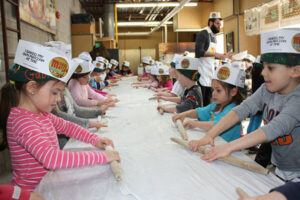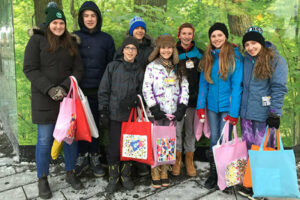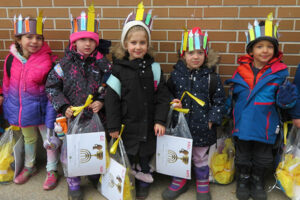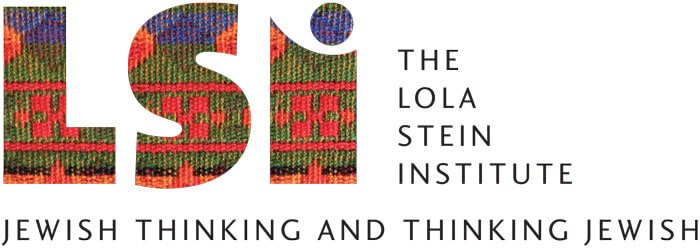- How We Teach

- First Column
- Second Column
- Third Column
- Case Studies

- First Column
- Second Column
- Culture & Community

- First Column
- Second Column
- News & Views

- Admissions

- First Column
- Second Column
- Support Us

- About

- First Column
- Second Column
- Parent Hub
- Attend an Open House
- Take a Tour
- Donate Now
- Calendar
- Blog
- 416-635-1876
- Search
Nurture Connection, Teach Independence…and Vice Versa
The more children understand the natural world, the more they can understand themselves.
The first time I entered the famed Toronto Heschel Teaching Garden to meet Ellen Kessler, the garden was abuzz with activity…literally. Morah Ellen drew her students’ attention to a small hole in the ground where bees flew in and out busily pollinating a small patch of strawberry plants. She bent low as one student approached, a ripe tomato in hand, asking if he could eat it. The blessing flowed as the boy prepared to enjoy the fruit he had helped to grow. Other students focused on a patch of earth uncovered by moving a tree stump. They cheered their discovery of worms and potato bugs.
In my years as a summer camp educator, I witnessed campers and counselors experience moments of wonder and awe as they explored the natural world. I sensed the value those moments held, long before I learned to speak of them as “teachable moments.”
The best way to diminish a camper’s fear of thunder was to teach her what lightning actually is. To calm a terrified cabin of campers I would frantically rub a polar fleece blanket on my head until static electricity crackled. The whole cabin would burst into laughter watching me get zapped by hundreds of tiny sparks.
As a teacher, I’m interested to know why my polar fleece method worked. I used to believe that the comedy of my scientific demonstration simply lightened the mood on dark stormy nights. Recently, however, I read a prayer by Rabbi Nachman of Bratslav and his words give me pause to
consider another possibility.Grant me the ability to be alone;
may it be my custom to go outdoors each day
among the trees and grass – among all growing things
and there may I be alone, and enter into prayer,
to talk with the One to whom I belong.
May I express there everything in my heart,
and may all the foliage of the field –
all grasses, trees, and plants –
awake at my coming,
to send the powers of their life into the words of my prayer
so that my prayer and speech are made whole
through the life and spirit of all growing things,
which are made as one by their transcendent Source.
May I then pour out the words of my heart
before your Presence like water, O L-rd,
and lift up my hands to You in worship,
on my behalf, and that of my children!
-Rabbi Nachman of BratslavTo be sure, the Rabbi’s words hold potent messages about the intimacy of our relationship with nature, but for me, as an educator, thinking back to those tiny sparks, one line stands out from the rest: “Grant me the ability to be alone.”
I would certainly understand if Rabbi Nachman prayed for the opportunity to be alone. We can all benefit from a little extra peace during the day. Or perhaps a more ecological reading of the prayer suggests desire for access to open spaces. Encounters with nature and injunctions to protect it are an important aspect of Judaism, but I don’t think this is what Rabbi Nachman’s word “ability” implies.
In a flash, just as a peal of lightning crashes above a camp cabin, the meaning becomes clear. Rabbi Nachman’s “ability to be alone” is what gives my camper the courage to face her fear. Knowledge. What allows each of us to be “alone” is a sense of competence, the independence that grows when we understand the world. Above all else, knowledge empowers our students to stand on their own and navigate the challenges they will face.
Knowledge not only emboldens us to venture into the world. It encourages us to recognize the miraculousness of nature. I find it fascinating that learning how a great magic trick is accomplished always lessens the effect, while learning about the natural wonders that shape our lives renders them more impressive.
To know how metamorphosis happens makes it all the more amazing to see a monarch butterfly emerge from a gold-flecked chrysalis. And anyone who can read the great narratives of ancient civilizations in the stars is rewarded by the additional lens through which to ponder the heavens. Understanding how things work enables us to consider their broader meanings.
Ironically, the more a student’s knowledge makes him able to be alone, the more he recognizes that we are never on our own at all. The impact of our actions on other living things becomes self evident as we come to understand the connectedness of all earth’s natural systems. A warm sense of connection emerges through what Rabbi Nachman calls the “custom” of closely observing nature’s wonders.
Inquiry and observation nurture our appreciation of nature. Respect for the source of these wonders increases in tandem with the knowledge we cultivate. When teachers foster a love of nature by providing students with opportunities to explore it with their hands and feet, we motivate them to make personal choices that support their world and its sustainability.
Young students may not yet articulate how the knowledge they gain through their school’s outdoor education and environmental programs fosters their “ability to be alone.” It took me years. Nonetheless, they reap the benefits academically and personally. As a classroom teacher, I appreciate the transformative power generated by fleeting sparks of wonder. The moments are very special and they occur naturally when we engage in the world
around us.If you want to know how we know, just speak to the little boy who brought his tomato to Morah Ellen. Ask him how it compares to tomatoes brought from the grocery store.
Daniel Abramson is an artist, photographer and teacher. At the Toronto Heschel School, his classes include Junior High science and art.
NEXT ARTICLE
Rabbi Abraham Joshua Heschel: Crossover ArtistSpecial Feature
The more children understand the natural world, the more they can understand themselves.Nurture Connection, Teach Independence…and Vice VersaOur Sages Tell Us
Legacy of an Inspired TeacherRabbi Abraham Joshua Heschel: Crossover ArtistColumns
Perspectives
 The Lola Stein Institute (LSI) is a centre of inventive educational thinking and addresses the challenge to re-frame schooling for the exigencies of our times.Home > THINK Magazine > Spring | Summer 2011 > Nurture Connection, Teach Independence…and Vice Versa
The Lola Stein Institute (LSI) is a centre of inventive educational thinking and addresses the challenge to re-frame schooling for the exigencies of our times.Home > THINK Magazine > Spring | Summer 2011 > Nurture Connection, Teach Independence…and Vice Versa

